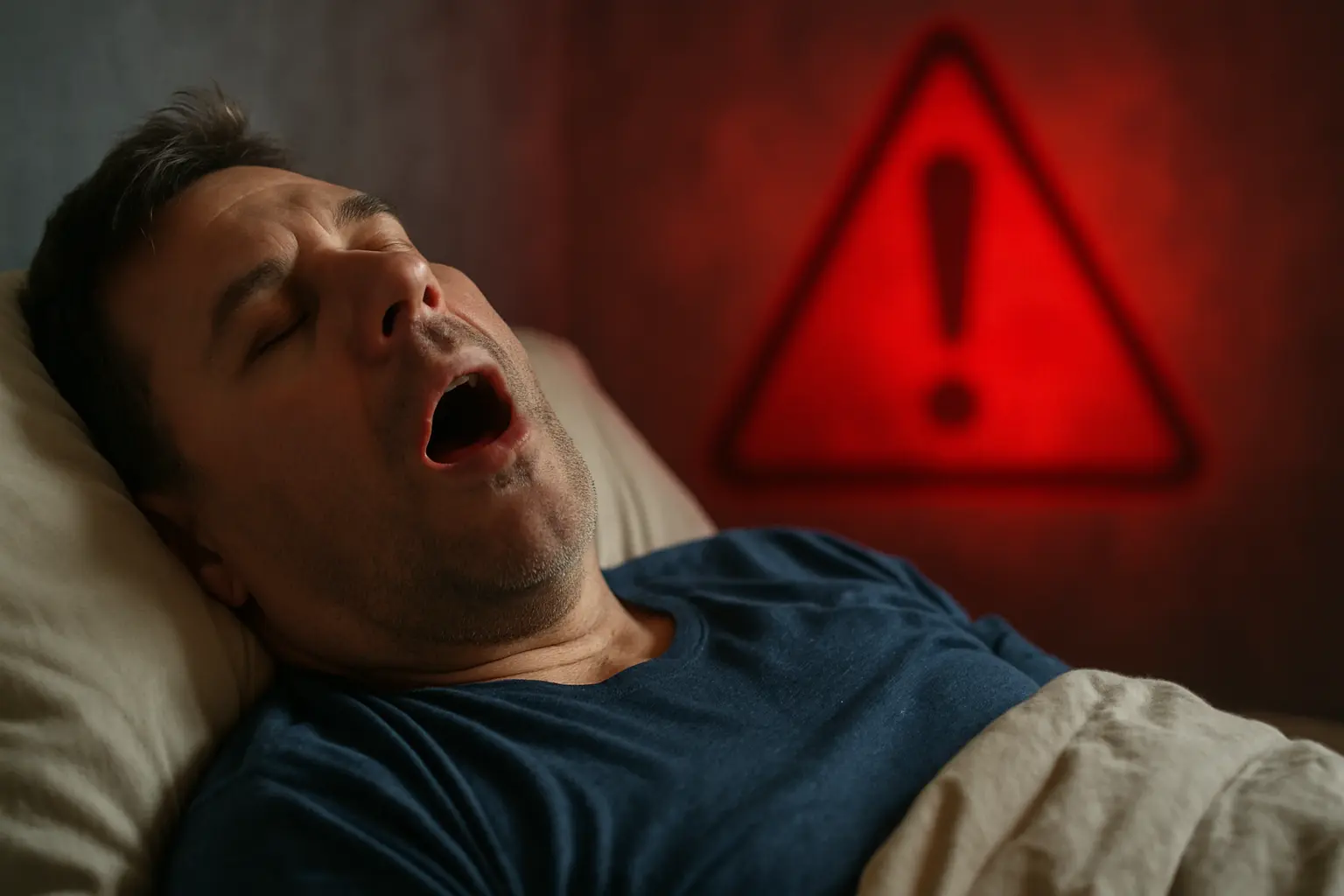When Snoring Gets Dangerous: Early Warning Signs of Sleep Apnea
We all know someone who snores.
Sometimes it's just a harmless nighttime noise, but in many cases, it's a warning signal — a sign your body is struggling to breathe properly while you sleep.
This article uncovers the subtle differences between simple snoring and sleep apnea, a condition that affects millions but often goes undiagnosed.
What Is Sleep Apnea?
Sleep apnea is a sleep-related breathing disorder where breathing repeatedly stops and starts during sleep.
The most common form, obstructive sleep apnea (OSA), occurs when throat muscles intermittently relax and block the airway.
According to the World Sleep Society (2024), 1 in 5 adults shows symptoms of mild to moderate sleep apnea, yet over 80% remain undiagnosed.
Key Warning Signs That Snoring Is No Longer "Normal"
| Symptom | Description | Frequency in Apnea Patients |
|---|---|---|
| Loud, chronic snoring | Heard across rooms | 92% |
| Pauses in breathing | 10+ seconds of silence between snores | 85% |
| Gasping or choking at night | Sudden awakening feeling short of breath | 78% |
| Excessive daytime sleepiness | Trouble staying awake during meetings or driving | 71% |
| Morning headaches | Due to low overnight oxygen levels | 58% |
If more than two of these symptoms sound familiar, it's time to take a closer look at your sleep health.
How Sleep Apnea Affects the Body
When breathing stops, oxygen levels in the blood drop rapidly.
This triggers a stress response, raising heart rate and blood pressure.
Repeated cycles of oxygen deprivation lead to:
- Cardiovascular strain (hypertension, arrhythmia)
- Cognitive fog and poor memory
- Mood disturbances, including irritability and anxiety
- Decreased metabolism and hormonal imbalance
A 2023 clinical review found that untreated OSA increases the risk of stroke by 67% and type 2 diabetes by 43%.
Detecting Sleep Apnea Early with Smart Monitoring
Traditional diagnosis requires an overnight sleep lab (polysomnography), which can be costly and inconvenient.
However, AI-based apps like SnailSleep now provide non-invasive early screening for sleep apnea risk by analyzing:
- Snoring intensity and duration
- Breathing pauses and sound gaps
- Body movement and position
- Nighttime heart rate patterns (via connected devices)
Example AI Insight:
"Possible apnea-like breathing pauses detected between 2:00 – 3:20 a.m. (avg. 14s each). Oxygen variation: moderate."
By monitoring these metrics consistently, users can identify concerning patterns early — long before symptoms become severe.
Real-Life Case: Maria's Wake-Up Call
Maria, 45, believed her snoring was just "normal."
After using SnailSleep for 10 nights, her data revealed multiple 12–15 second pauses in breathing each hour.
Her doctor later confirmed mild OSA, and with lifestyle changes plus positional therapy, her snoring decreased by 70%.
What You Can Do Tonight
- Avoid alcohol and sedatives — they relax airway muscles.
- Sleep on your side, not your back.
- Keep a consistent bedtime to support respiratory rhythm.
- Use SnailSleep to track and visualize snoring and breathing events.
- Consult a physician if your data shows repetitive pauses or gasps.
Final Thoughts
While CPAP remains the gold standard for diagnosed sleep apnea, early awareness through AI detection tools like SnailSleep empowers users to take control before medical intervention becomes necessary.
Combining lifestyle adjustments with digital insights marks the future of personalized sleep care.
Related Articles
- The Role of Weight and Obesity in Snoring and Sleep Apnea
- Obstructive Sleep Apnea Symptoms: Recognizing the Silent Threat to Your Health
- Sleep Apnea Symptoms: Warning Signs You Shouldn't Ignore

